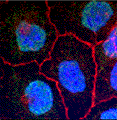Biochemistry, Department of
Document Type
Article
Date of this Version
2020
Citation
Journal of Microbiology & Biology Education Volume 21, Number 1 DOI: https://doi.org/10.1128/jmbe.v21i1.2083
Abstract
In contrast to efforts focusing on improving inclusion in STEM classrooms from kindergarten through un-dergraduate (K–16), efforts to improve inclusion in scientific meetings and conferences, important hubs of STEM culture, are more recent. Markers of inclusion that are sometimes overlooked at these events can include the composition of panels, how workshops are run, the affordability of conferences, and various other mechanisms that maintain pre-existing hierarchies and norms that limit the participation of early-career researchers and individuals of minoritized cultural, linguistic, and economic backgrounds. The Inclusive Environments and Metrics in Biology Education and Research (iEMBER) network coordinates efforts of researchers from many fields interested in diversity and inclusion in biology education. Given the concerns regarding inclusion at professional meetings, iEMBER has developed and implemented several practices in planning and executing our meetings to make them more inclusive. In this report, we share our experiences developing inclusive meetings on biology education research and discuss the outcomes of such efforts. Spe-cifically, we present our approach to planning and executing the iEMBER 2019 conference and the National Association of Biology Teachers iEMBER 2019 workshop. This report adds to the growing body of resources on inclusive meetings, provides readers with an account of how such an attempt at implementation might unfold, and complements existing theories and work relating to the importance and functioning of such meetings in terms of representation in STEM.
Included in
Biochemistry Commons, Biotechnology Commons, Other Biochemistry, Biophysics, and Structural Biology Commons



Comments
©2020 Author(s).